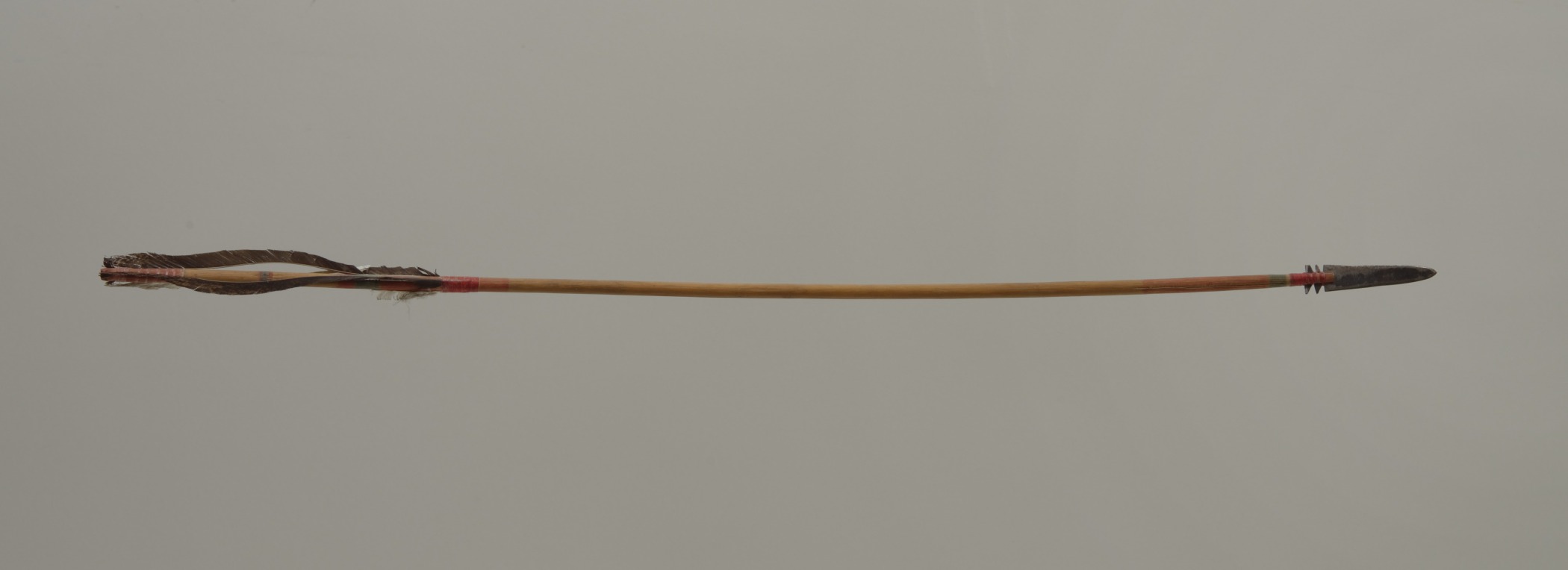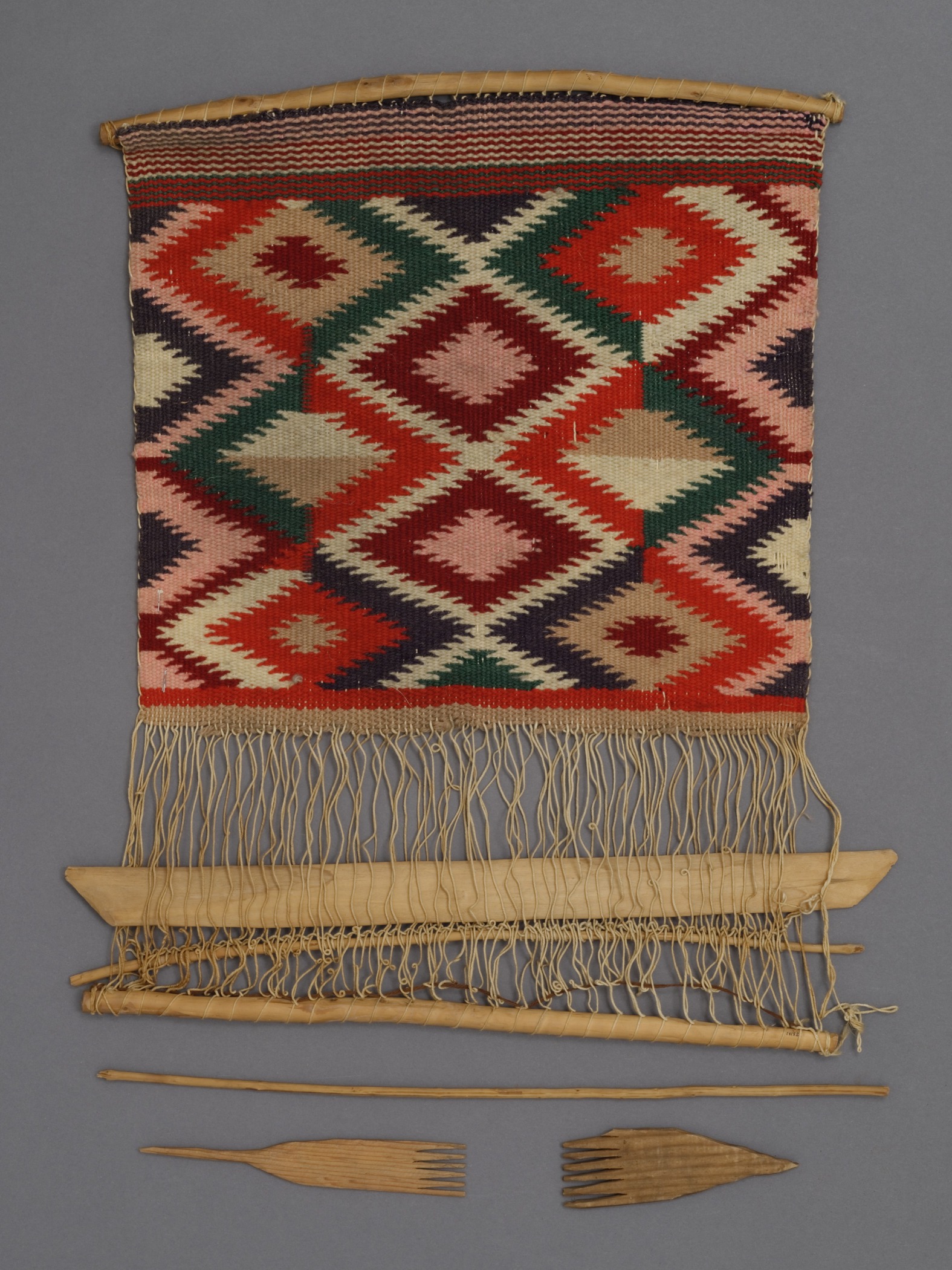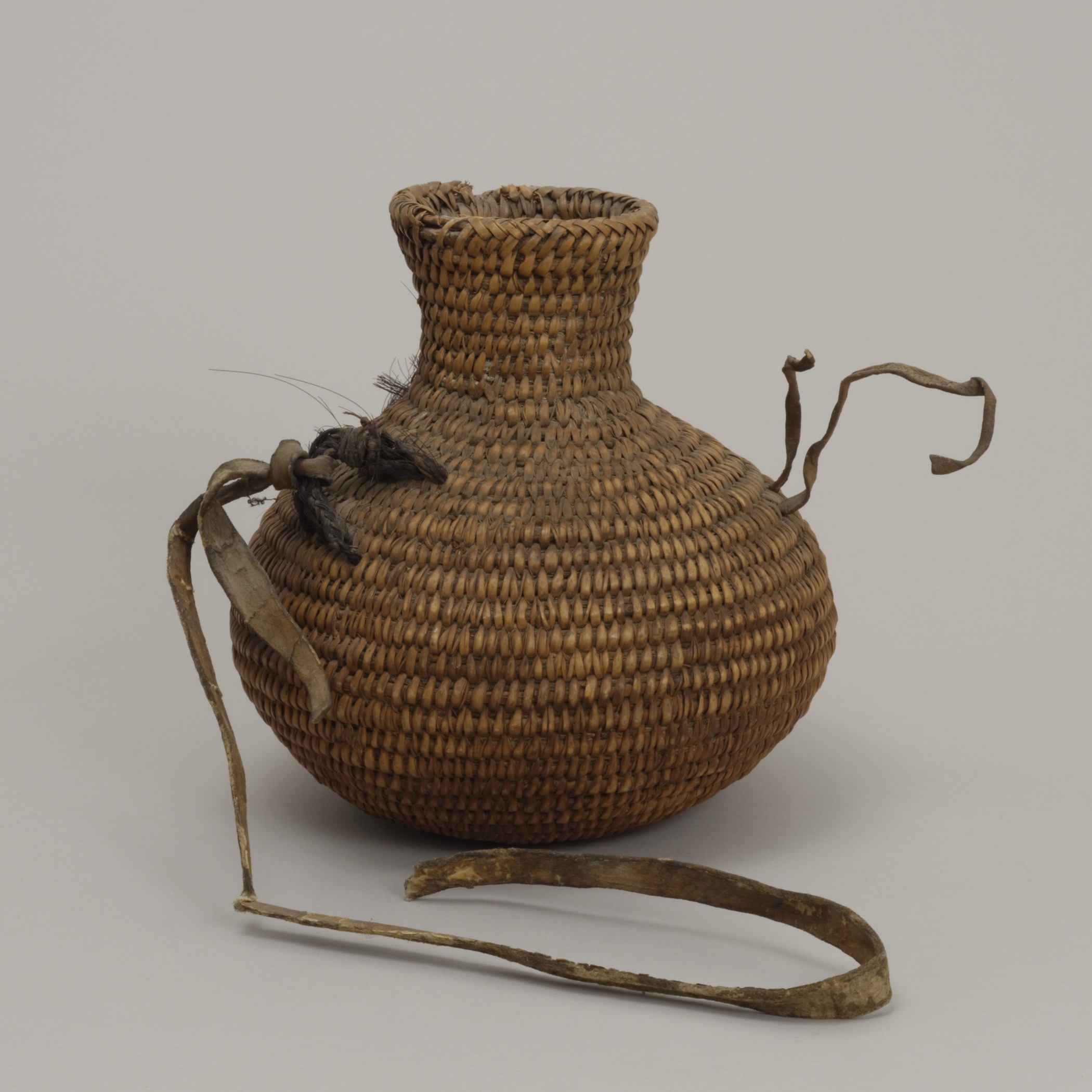Jicarilla Apache (top)
Mescalero Apache, New Mexico (bottom)
Bow
- Mid–late 19th century
- Wood and sinew
- 42 11/16 × 1 1/4 × 13/16 in.
Hood Museum of Art, Dartmouth College: Gift of Guido R. Rahr, Sr., Class of 1951P; 985.47.26518
visibilityLook & DiscussWar arrow
- About 1900
- Steel, wood, sinew, and paint
- 33 in.
Hood Museum of Art, Dartmouth College: Bequest of Frank C. and Clara G. Churchill; 46.17.9970
Native American hunters and warriors across North America used bows and arrows as quiet, efficient tools for stalking and hunting game and warfare. The materials, shape, and size of the bow affected the distance the arrow could travel and its force.
Explore the Object
This bow was made by a Jicarilla [hee-kuh-REE-uh] Apache man almost 150 years ago. Apache bows are large and very durable, made with mulberry or cedar wood and wrapped in buffalo sinew, the tough fiber that connects muscle to bone. The strings are often made from buffalo skin or gut. The wood and sinew had to be cut, formed, dyed, dried, and cured. As a result, creating a bow was a complicated process that could take up to 10 days. A skilled bow maker had high status among the Apache people.
A Mescalero Apache man made this arrow about 100 years ago. Apache arrows are also large and strong, designed to breach the tough skin of deer and buffalo. The shaft of the arrow is made out of wood. Early on, notched stone arrowheads were lashed onto the shaft with sinew, gut, or rawhide. Arrow makers attached, or fletched, feathers by inserting them into the shaft or sewing them in place with sinew. Over time, Apache men refined the technology of their bows and arrows. They added new materials, like metal for the arrowhead, when they became available through trade with European settlers. Metal arrowheads were easier to shape and more durable than stone ones.
By the late nineteenth century, bows and arrows were largely replaced by guns. However, some hunters continued to use them because in many ways they remained a superior weapon for quietly stalking prey. Many hunters, native and non-native, use bows and arrows as hunting tools today.
learn more
Search the Hood Museum of Art’s Native American collection database for bow and arrow to see examples made by different native cultures.
Compare the materials, sizes, and shapes of bows from each region.
How do they reflect the geography of the area?
What sorts of game might they have been designed to hunt?




